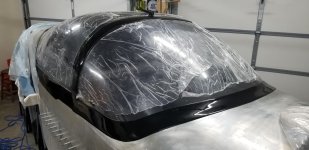drone_pilot
Well Known Member
I have noticed on several finished and flying RV's that the glassed fairing at the base of the windscreens is cracking. My Cessna has a strip of aluminum to fair the base of the windscreen. I was just wondering if anyone out there has tried any alternatives to "glassing" the windscreen fairing to the windscreen? If so, any pics? Likewise, are there any known ways to prevent the cracks from occurring?
The last RV I saw had a beautiful paint job and now cracks are forming at the base of the windscreen. I just want to put some thought into this as I am just about to start cutting the canopy.
The last RV I saw had a beautiful paint job and now cracks are forming at the base of the windscreen. I just want to put some thought into this as I am just about to start cutting the canopy.














